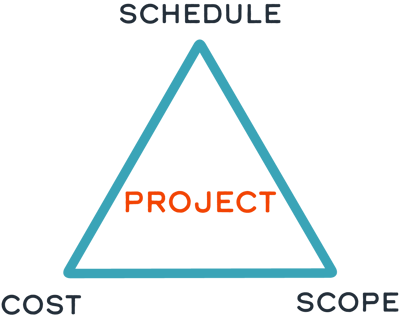Ask an MIT Professor: Leveraging Information to Improve Project Management Strategy
“Everything around us that is human-made is the result of projects that were planned and executed to enhance the world we live in,” says Olivier de Weck, MIT Apollo Program Professor of Astronautics and Engineering Systems and lead faculty instructor of MIT xPRO’s project management course, Project Management: Leading Organizations to Success.
Project leaders—critical team members who often hold the title of program manager or project manager—are largely responsible for the success of these projects. They must be influential leaders, motivators, and organizers to keep all timelines, dependencies, and responsibilities on track.
We recently caught up with Professor de Weck to hear his insights on how using information to one’s advantage can take one’s projects to the next level and learn more about what participants can expect from his project management course.
The Critical Role Information Plays in the Project Life Cycle
In project management, information is power. From collecting project requirements and setting up a team to tracking the progress of a project and reporting its financial status and value delivered, the process of gathering, organizing, and communicating information throughout the project life cycle is essential.
“Information is key to understanding a project’s scope, cost, and schedule,” says Professor de Weck, explaining that these three domains comprise an Iron Triangle that is present in every project and must be in sync for a project to be successful.
The Iron Triangle of Project Management
The three sides of the Iron Triangle are cost, scope, and schedule, and they are in tension with each other. Understanding and managing this tension carefully is key to success.

Project cost
How much will it cost to deliver a project successfully? For example, suppose the project aims to produce a revenue-generating product or service. How much information is available to accurately estimate the cost of the project and the future revenues?
According to Professor de Weck, there is often a significant degree of uncertainty regarding the cost of a project.
Project scope
It’s vital to know the technical information pertaining to the project’s scope. Professor de Weck uses the example of MIT constructing or remodeling buildings throughout the campus in recent decades. “Every one of those buildings is in a different location, uses different technologies, has different floor plans and seismic requirements,” he says. “That information is critical to understanding the architecture and technology required to complete each building successfully.”
Any information gaps can result in costly missteps. For a recent illustration of this point, look no further than the story of Spain spending €258 million on trains too big for its tunnels.
Project schedule
Regarding a project’s schedule, it’s important to answer questions like: How long will it take to deliver this project? How many hours of effort are required? How big is the team? How many holidays and actual work hours per year are realistically available in different countries around the world?
The Size of an Organization or Team Impacts How Information Is Used
“The size of an organization is a huge factor in how information is used,” says Professor de Weck. Team size, in particular, is an essential consideration.
According to Professor de Weck, research has shown that the most effective team size is approximately five people. “When five people are working together closely, information flows easily,” he explains. “Team members can exchange information in real-time, especially if they are located in the same place, and there is less of a risk of information being lost.”
The challenge is that most of today’s projects have teams of more than five people—potentially hundreds or thousands of people worldwide. And the larger the team, the more time must be spent on coordinating the project rather than performing the work tasks of the project itself.
“When you have a team with hundreds or thousands of people, you need project leaders whose main job is to manage, organize, and communicate information,” says Professor de Weck. With a project leader filling that critical project management role, other more specialized team members can focus more intently on the essence of the work.
“As the size of a team or organization grows, there are diminishing returns. Every new person you add to the team will be able to do more work and contribute more, but their marginal contribution will become less and less because of the issue with coordination overhead,” explains Professor de Weck.
One strategy for managing a large project is splitting it into smaller sub-projects. “Using a technique called abstraction, you can abstract a massive project that is overwhelming in its complexity into smaller, more manageable projects,” says Professor de Weck. Of course, coordinating and exchanging information among these sub-projects is still vital.
Filtering the noise: a major challenge today’s project leaders face
While technological advances—such as the internet and cloud-based work—have made it easier in many ways to facilitate the flow of information for complex projects with large teams, Professor de Weck notes that a major challenge today’s project leaders face is filtering the noise.
“As we can communicate with each other more easily, information flows so readily that there’s almost too much of it at times,” says Professor de Weck. “Today’s project leaders must be adept at picking out the critical information needed to lead their part of the project.”
Advice for Project Leaders Who Manage Complex Projects
When asked what advice he has for professionals who manage complex projects, Professor de Weck reiterates that using the Iron Triangle is a great starting point. Furthermore, he notes that it’s essential to understand why a project is being initiated and who initiated it. Module 1 of his course focuses on assessing that vital information.
Another important tip he shares is to beware of over-optimism, which he acknowledges can be challenging for project leaders. “There’s a natural tendency to promise the best-case scenario regarding a project’s scope, cost, and schedule. But leaders should consider a distribution of outcomes to manage expectations,” he says.
For example, a project leader who wants to manage expectations might say, “There is a 50% probability that we could finish this new building in 27 months and a 25% probability that it could take us 48 months or longer.”
Finally, Professor de Weck encourages project leaders to consider online project management learning solutions for their teams, which can help create a common language around project management and promote a more collaborative team dynamic.
What to Expect from Professor de Weck’s Project Management Course
While Professor de Weck says that anyone can benefit from his project management course, he notes that it’s geared toward mid to senior-level professionals. If you have been involved in a few projects already and have had varying levels of success, this course will help you facilitate high performance across various project standards, methods, concepts, and architectures.
Regarding how he teaches the course, Professor de Weck is a big proponent of using case studies to demonstrate real-world applications. “We do have a bit of fun in the course,” he adds. For example, he likes to have participants take the Myers–Briggs Type Indicator (MBTI) personality test “but with a slight twist on project leadership styles.”
While the course is taught online, Professor de Weck explains that he does a master class from Global Alumni’s global bridge in Cambridge, Massachusetts, and that learners have a chance to ask him live questions. Additionally, every learner is assigned to a cohort and a learning facilitator (LF) to enhance opportunities for learning. Currently, the course is taught in English, Spanish, and Portuguese, which opens it to more learners around the globe.
Are you ready to take your projects to the next level? Enroll in Project Management: Leading Organizations to Success today!



